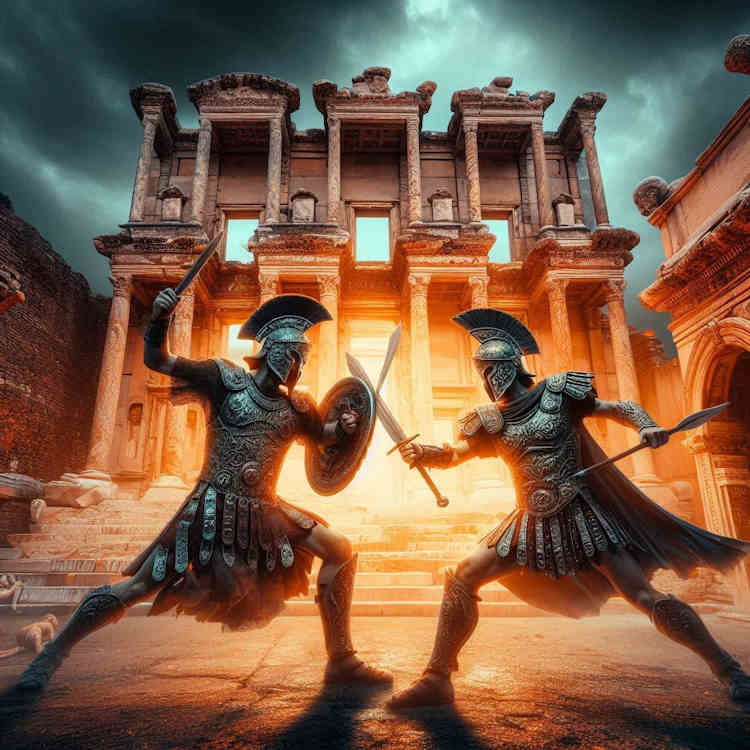The Roman Empire, which ruled Ephesus from 133 BCE to the 5th century CE, was known for its grandeur, military prowess, and, of course, its love of entertainment. Gladiator fights in Ephesus served multiple purposes such as entertainment, politic maneuvers and socializing between Ephesians. These games were a potent symbol of Roman ideals of courage, skill, and the might of the empire. They were a tool for political propaganda, showcasing the empire’s ability to conquer and entertain, while also offering a stark reminder of the empire’s control over life and death.

The gladiators of Ephesus were a fascinating and often tragic part of the ancient world. Their lives were filled with danger, excitement, and the constant threat of death. As you explore the ruins of the amphitheater, take a moment to imagine the roar of the crowd, the clash of steel, and the spectacle of the gladiatorial fights that once took place within these historic walls.
Burial Ground of Gladiators in Ephesus
Archeologists working in Ephesus discovered a burial ground in 1993. They thought this is just another graveyard, but soon they realized they actually found something amazing.
There were 68 men’s bones aging between 20 and 30 years of age. They mostly had fatal injuries, which probably caused their deaths. Further excavations revealed a lot of gravestones with gladiators carved on them which made everyone to understand that they found the first burial ground of the gladiators in Ephesus. Several of the findings from this burial ground can be seen at the Ephesus Archeological Museum.
Who Became A Gladiator in Ephesus?
So, how did one become a gladiator in Ephesus? The answer lies in the city’s social hierarchy. Many gladiators were slaves, prisoners of war, or convicts, who were forced into the arena as a form of punishment or to entertain the masses. Others, however, were volunteers, often from the lower classes, who saw gladiatorial combat as a means to gain fame, fortune, and social mobility.
Types of Ephesian Gladiators
Gladiator training in Ephesus was a laborious and dangerous undertaking. They were taught various fighting techniques, including swordsmanship, wrestling, and the use of different weapons. The training grounds, known as ludus, were often located near amphitheaters. Gladiators would practice against each other, as well as with wooden dummies and live animals.
There were numerous types of gladiators in Ancient Ephesus, each with their own specialized weapons and fighting styles. Some of the most common types included:
- Secutor: Armed with the famous gladius (sword) and legandary scutum (shield), the secutor gladiators were heavily armored fighters which were known for their defensive tactics.
- Retiarius: A classic warrior equipped with a trident, a net, and a dagger, the retiarius relied on speed and agility to overpower his foes.
- Thrax: Using a short sword and a small shield, the thrax was a versatile gladiator who could fight in various styles.
- Mirmillo: Similar to the secutor, the mirmillo was a heavily armored gladiator with a distinctive helmet featuring a fish crest.
Tour Guide for Ephesus Gladiator Graveyard
I like to open new windows and mindsets for my guests. Learning about Ephesian Gladiators for the first time made me to understand there is no big difference between ancient Ephesus and our culture today. Contact me to learn more about the Gladiators of Ephesus and to hire a professional licensed English-speaking tour guide in Ephesus, Turkey. See you soon, Hasan Gülday.